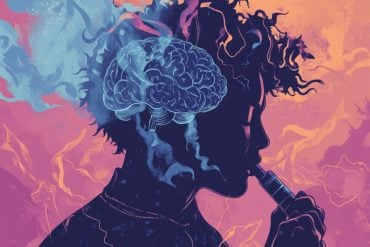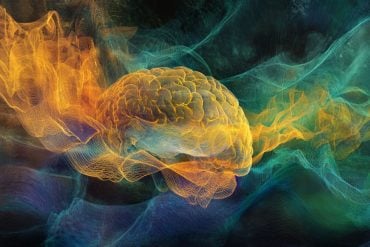Summary: Scientists have identified a new group of neurons that plays a crucial role in controlling left-right movements in walking, bridging a critical gap in our understanding of brainstem and basal ganglia interaction. This discovery provides insights into the brain’s complex navigation system previously linked to the ‘brain’s steering wheel.’
The findings might offer future therapeutic strategies for Parkinson’s disease. By studying mice, the team anticipates similar mechanisms in humans, potentially revolutionizing treatments for movement disorders.
Key Facts:
- The study reveals a new group of neurons in the brainstem that receives signals from the basal ganglia to control the direction of movement, offering a deeper understanding of how voluntary movements like walking are coordinated.
- Researchers used optogenetics to modify and stimulate these neurons in mice, successfully correcting impaired left or right movements, showcasing the method’s potential for treating motor symptoms in diseases like Parkinson’s.
- The basal ganglia’s critical role in voluntary movement has been known, but how it influences left-right movement decisions was unclear until this breakthrough, highlighting the importance of this brain area in motor control.
Source: University of Copenhagen
Have you ever wondered what happens in the brain when we move to the right or left? Most people don’t; they just do it without thinking about it. But this simple movement is actually controlled by a complex process.
In a new study, researchers have discovered the missing piece in the complex nerve-network needed for left-right turns. The discovery was made by a research team consisting of Assistant Professor Jared Cregg, Professor Ole Kiehn, and their colleagues from the Department of Neuroscience at the University of Copenhagen.

In 2020, Ole Kiehn, Jared Cregg and their colleagues identified the ‘brain’s steering wheel’ – a network of neurons in the lower part of the brainstem that commands right- and left- movements when walking. At the time, though, it was not clear to them how this right-left circuit is controlled by other parts of the brain, such as the basal ganglia.
“We have now discovered a new group of neurons in the brainstem which receives information directly from the basal ganglia and control the right-left circuit,” Ole Kiehn explains.
Eventually, this discovery may be able to help people suffering from Parkinson’s disease. The study has been published in the esteemed scientific journal Nature Neuroscience.
The basal ganglia are located deep within the brain. For many years now, they have been known to play a key role in controlling voluntary movements.
Years ago, scientists learned that by stimulating the basal ganglia you can affect right- and left-hand movements in mice. They just did not know how.
“When walking, you will shorten the step length of the right leg before making a right-hand turn and the left leg before making a left-hand turn. The newly discovered network of neurons is located in a part of the brainstem known as PnO. They are the ones that receive signals from the basal ganglia and adjust the step length as we make a turn, and which thus determine whether we move to the right or left,” Jared Cregg explains.
The study therefore provides a key to understanding how these absolutely essential movements are produced by the brain.
In the new study, the researchers studied the brain of mice, as their brainstem closely resembles the human brainstem. Therefore, the researchers expect to find a similar right-left circuit in the human brain.
People with Parkinson’s have difficulties making right and left turns
Parkinson’s disease is caused by a lack of dopamine in the brain. This affects the basal ganglia, and the researchers responsible for the new study believe that this leads to failure to activate the brainstem’s right-left circuit.
And it makes sense when you look at the symptoms experienced by people with Parkinson’s at a late stage of the disease – they often have difficulties turning when walking.
In the new study, the researchers have studied this in mice with symptoms resembling those of people with Parkinson’s disease. They made so-called Parkinson’s model, removing dopamine from the brain of mice and thus giving them motor symptoms similar to those experienced by people suffering from Parkinson’s disease
“These mice had difficulties turning, but by stimulating the PnO neurons we were able to alleviate turning difficulties,” Jared Cregg says.
Using Deep Brain Stimulation, scientists may eventually be able to develop similar stimulation for humans. At present, though, they are unable to stimulate human brain cells as accurately as in mice models, where they used advanced optogenetic techniques.
“The neurons in the brainstem are a mess, and electric stimulation, which is the type of stimulation used in human Deep Brain Stimulation, cannot distinguish the cells from one another. However, our knowledge of the brain is constantly growing, and eventually we may be able to start considering focused Deep Brain Stimulation of humans,” Ole Kiehn concludes.
Facts: What the researchers did
The researchers used optogenetics to stimulate the network of neurons in PNO (Pontine reticular nucleus, oral part). In short, optogenetics is a technique for genetically modifying specific brain cells to make them light sensitive and thus susceptible to light stimulation.
When the researchers activated the light, mice that had only been capable of making left turns could now also walk in a straight line and make right turns.
About this neuroscience and navigation research news
Author: Liva Polack
Source: University of Copenhagen
Contact: Liva Polack – University of Copenhagen
Image: The image is credited to Neuroscience News
Original Research: Open access.
“Basal ganglia-spinal cord pathway that commands locomotor gait asymmetries in mice” by Ole Kiehn et al. Nature Neuroscience
Abstract
Basal ganglia-spinal cord pathway that commands locomotor gait asymmetries in mice
The basal ganglia are essential for executing motor actions. How the basal ganglia engage spinal motor networks has remained elusive. Medullary Chx10 gigantocellular (Gi) neurons are required for turning gait programs, suggesting that turning gaits organized by the basal ganglia are executed via this descending pathway.
Performing deep brainstem recordings of Chx10 Gi Ca2+ activity in adult mice, we show that striatal projection neurons initiate turning gaits via a dominant crossed pathway to Chx10 Gi neurons on the contralateral side.
Using intersectional viral tracing and cell-type-specific modulation, we uncover the principal basal ganglia–spinal cord pathway for locomotor asymmetries in mice: basal ganglia → pontine reticular nucleus, oral part (PnO) → Chx10 Gi → spinal cord.
Modulating the restricted PnO → Chx10 Gi pathway restores turning competence upon striatal damage, suggesting that dysfunction of this pathway may contribute to debilitating turning deficits observed in Parkinson’s disease.
Our results reveal the stratified circuit architecture underlying a critical motor program.






